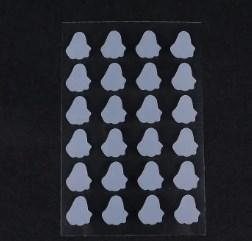In the ongoing quest for flawless skin, the Acne Patch has emerged as a popular and effective solution for managing breakouts. These small, adhesive bandages are designed to target pimples and provide a protective barrier, allowing the skin to heal without interference from external irritants. But what exactly are Acne Patches, and how do they work to combat one of the most common skin concerns?
Acne Patches are thin, hydrocolloid bandages that adhere to the skin and create a microclimate around the pimple. They are typically hydrophilic, meaning they can absorb and retain moisture, which is crucial for the healing process. The primary function of an Acne Patch is to provide a physical barrier that protects the affected area from bacteria, dirt, and other environmental factors that could potentially worsen the condition.
The working principle of Acne Patches involves several key components. Firstly, they are designed to absorb excess sebum and pus from the pimple, reducing inflammation and promoting a faster healing process. The hydrocolloid material in the patch creates a moist environment that encourages the natural healing process of the skin. This is particularly beneficial for those with active breakouts, as it helps to prevent further irritation and potential scarring.
Another important aspect of Acne Patches is their ability to provide a physical barrier against bacteria. By covering the pimple, the patch prevents the transfer of bacteria from the user's hands or other surfaces, which can lead to further infection and inflammation. This is especially useful for individuals who may unconsciously touch their face throughout the day, potentially spreading bacteria and exacerbating the issue.
In addition to their protective qualities, Acne Patches also contain various active ingredients that can help to soothe and treat the affected area. Many patches are infused with ingredients such as salicylic acid, tea tree oil, or benzoyl peroxide, which are known for their acne-fighting properties. These ingredients work in conjunction with the patch's physical barrier to provide a comprehensive treatment for pimples.
One of the most significant benefits of Acne Patches is their convenience and ease of use. They can be applied quickly and discreetly, making them an ideal solution for those with active lifestyles or who may not have the time for more involved skincare routines. The patches are also transparent or flesh-toned, allowing them to blend seamlessly with the skin, providing a cosmetic advantage over traditional spot treatments.
However, it is essential to note that Acne Patches are not a one-size-fits-all solution. They are most effective for small, isolated breakouts and may not be as beneficial for individuals with severe or widespread acne. In such cases, it is recommended to consult with a dermatologist for a more tailored treatment plan.
In conclusion, Acne Patches offer a convenient and effective solution for managing pimples and promoting skin health. By providing a protective barrier, absorbing excess sebum, and delivering active ingredients directly to the affected area, these patches can significantly improve the healing process and reduce the appearance of blemishes. While they may not be suitable for all types of acne, Acne Patches remain a valuable tool in the pursuit of clear, healthy skin.
